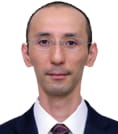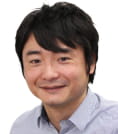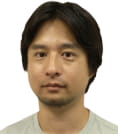- JST Home
- /
- Strategic Basic Research Programs
- /
 PRESTO
PRESTO- /
- project/
- Large-scale genome synthesis and cell programming/
- [Genome programming] Year Started : 2019
[Genome programming] Year Started : 2019
Kazunari Kaizu
Whole-cell modeling of a bacterial cell from genomic sequence
Researcher
Kazunari Kaizu

Senior Scientist
Center for Biosystems Dynamics Research
RIKEN
Outline
A whole-cell simulation is one of the essential tools to design genomic DNA from scratch. This project aims to develop a novel platform for automated bottom-up modeling of a bacterial cell, Escherichia coli, to predict phenotypes from its genomic sequence. This approach provides a sustainable way of modeling and quantitative simulation based on huge amounts of knowledge from databases. The simulation results provide “in silico omics” data quantitatively comparable with wet omics experiments such as transcriptome, proteome, and metabolome. The computational evaluation of genomes synthesized in silico will reveal how a genomic sequence is optimized and what principles genomes are designed by.
Andres Canela
Role of DNA topology in genome organization
Researcher
Andres Canela

Specially-Apointed Associate Professor
The Hakubi Project for Advanced Research
Kyoto University
Outline
In all organisms the genome is folded to fit inside of the cell that is thousands of times smaller. Correct folding of the DNA is essential for gene expression and understanding this process is crucial for optimal synthetic DNA design. In mammalian interphase cells, DNA is folded into loops by a ring-shaped complex cohesin that entraps DNA. I found that Topoisomerase (TOP2), that releases torsions in the DNA, acts at cohesin sites. However, the source of the torsional stress and role of TOP2 are unknown. I aim to elucidate how topoisomerase 2 regulates loop formation to better understand how the genome is spatially organized.
Tsuyoshi Terakawa
DNA curtain assay of epigenome inheritance at single molecule level
Researcher
Tsuyoshi Terakawa

Assistant Professor
Graduate School of Science
Kyoto University
Outline
To design a genomic sequence based on the principle of genome function and to create an artificial cell, we need to understand the regulation of gene expression by acquired chemical modification to biomolecules (epigenetic modifications). Considering that the artificial cells multiply by cell division, it is crucial to understand the mechanism of the inheritance of the epigenetic modifications. In this study, I will reveal the molecular mechanism of epigenetic inheritance using a DNA curtain assay, one of the single-molecule fluorescent microscopic techniques.
Tomoko Nishiyama
Hub structure connecting higher-order chromatin architecture and genome function
Researcher
Tomoko Nishiyama

Professor
Graduate School of Science
Kyoto University
Outline
Numerous recent genome-wide sequencing studies are revealing higher order chromatin architecture in the nucleus, which includes chromatin domains, topologically associated domains, compartments, and so on. These chromatin architectures are thought to be tightly related to genomic functions such as transcription, replication and formation of chromosomal territories. However, the molecular mechanisms of how these architectures are constructed and fine-tuned to regulate genomic functions are still unclear. This study aims to uncover the molecular mechanisms organizing higher-order chromatin architecture, especially in single molecule resolution, and to reconstitute the architecture for regulating genomic machinery in vitro.
Shingo Nozaki
Generation of synthetic bacteria by ship in a bottle method
Researcher
Shingo Nozaki

Associate Professor, Collaborative Research Laboratory
Graduate School of Advanced Science and Engineering
Hiroshima University
Outline
In this research, I aim to generate synthetic bacteria by introducing fragmented artificial genomes into bacterial cells and assembling them into complete large genomes inside the cells, like a ship in a bottle, which is produced by building a model ship inside an empty bottle. The technology to create synthetic bacteria with flexibly designed artificial genomes is useful not only for production of materials but also for determining the essential factors of life, and is expected to greatly approach the answer to the question of what life is.
Gosuke Hayashi
in vitro reconstitution of epigenetically modified nucleosomes powered by organic chemistry
Researcher
Gosuke Hayashi

Associate Professor
Graduate School of Engineering
Nagoya University
Outline
In this project, I develop a technology for reconstitution of epigenetically modified nucleosomes and their arrays on naturally-occurring DNA sequences by utilizing precise molecular manipulation techniques of organic chemistry. In particular, I prepare DNA and nuclear proteins such as histone proteins with site-specific modifications by total chemical synthesis, and create real nucleosomes that reflect intranuclear environment in terms of epigenetic modifications and DNA sequences. This technology will contribute not only to chromatin molecular biology but also to chromatin synthetic biology, which is aimed at this PRESTO and CREST research group.
Akihito Harada
Development of reconstruction technology for tissue-specific genomic structures
Researcher
Akihito Harada

Associate Professor
Medical Institute of Bioregulation
Kyushu University
Outline
The formation of an adult somatic cell from genomic DNA requires a tissue-specific genomic structure which selects a set of relevant genes for expression. In this project, I propose to identify tissue-specific transcription factors and higher-order genomic structures necessary for functional expression, and finally reconstruct such structures. For this purpose, I will advance the development of a novel regulatory technology which simultaneously allows the elucidation and reconstruction of the tissue-specific genomic organization.
Masatoshi Maeki
Development of transfection method for long-chain DNA using artificial exosomes
Researcher
Masatoshi Maeki

Associate Professor
Faculty of Engineering
Hokkaido University
Outline
Lipid nanoparticles and exosomes have demonstrated excellent performance targeting organs, and high transfection efficiency. However, the transfection ability of exosomes is not understood in detail. It is expected that the unique characteristics of exosomes can be applied to develop an efficient transfection method. The aim of this project is to elucidate important factors regarding exosomes for transfection and develop a transfection method for long-chain DNA using artificial exosomes.
Yoshiaki Masaki
Long DNA synthesis using chemically stable nucleotide analogues
Researcher
Yoshiaki Masaki

Assistant Professor
School of Life Science and Technology
Tokyo Institute of Technology
Outline
It is known that various kinds of side-products form during the chemical synthesis of DNA. These side products are known to significantly influence the accuracy of synthesized genes and genomes. This project aims to develop a new technology to surpass the current technological limit of genome synthesis through the development of chemically stable nucleotide analogues and renovate phosphoramidite chemistry to specialize in genome synthesis.
Ryo Mizuuchi
Development of a genome expansion technology inspired by the early evolution of life
Researcher
Ryo Mizuuchi

Senior Assistant Professor
School of Advanced Science and Engineering
Waseda University
Outline
Using knowledge of the early evolution of life, I will develop an artificial cell-based technology of evolutionary engineering to spontaneously integrate gene fragments into a long genome that efficiently replicates and functions. This technology allows us to construct a genome encoding arbitrary genes and evolve them by means of artificial cell systems.
Yasuto Murayama
Controlling DNA entanglements to ensure efficient DNA replication and recombination
Researcher
Yasuto Murayama

Associate Professor
National Institute of Genetics
Research Organization of Information and Systems
Outline
As genomic DNA is much longer than the cells in which it is stored, its replication is often associated with “DNA entanglements”, higher-order DNA structures that arise during DNA metabolism. This research aims to elucidate the mechanism whereby these higher-order DNA structures are resolved, with a particular focus on the role of SMC (Structural Maintenance of Chromosomes) proteins. By isolating and reconstituting this resolving activity, I aim to develop an in vitro system that enables chromosomal duplication in a test tube using purified eukaryotic proteins.













